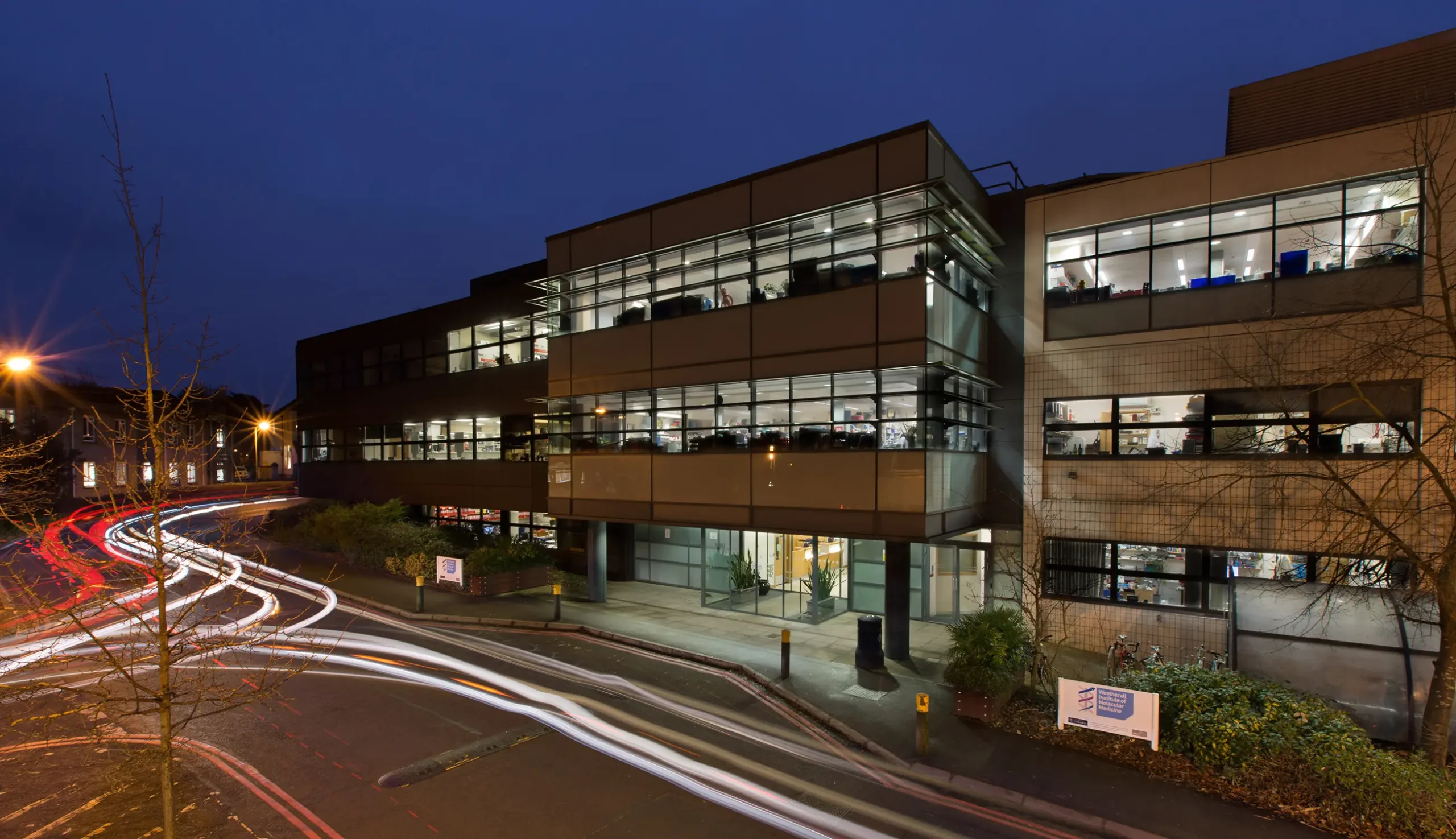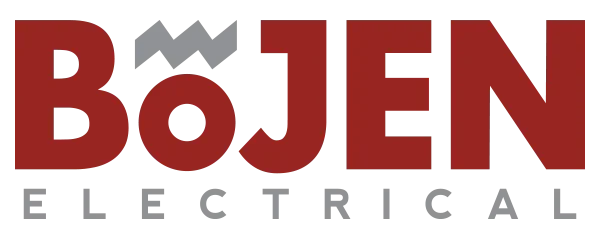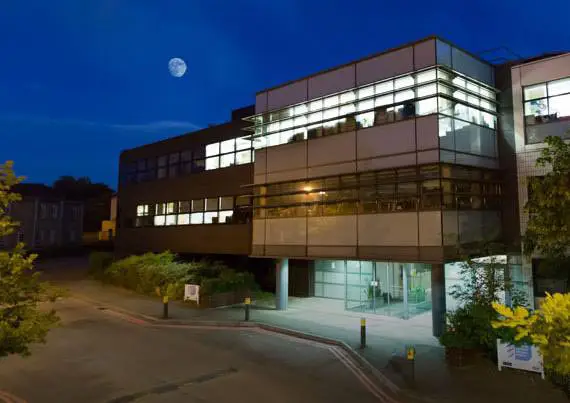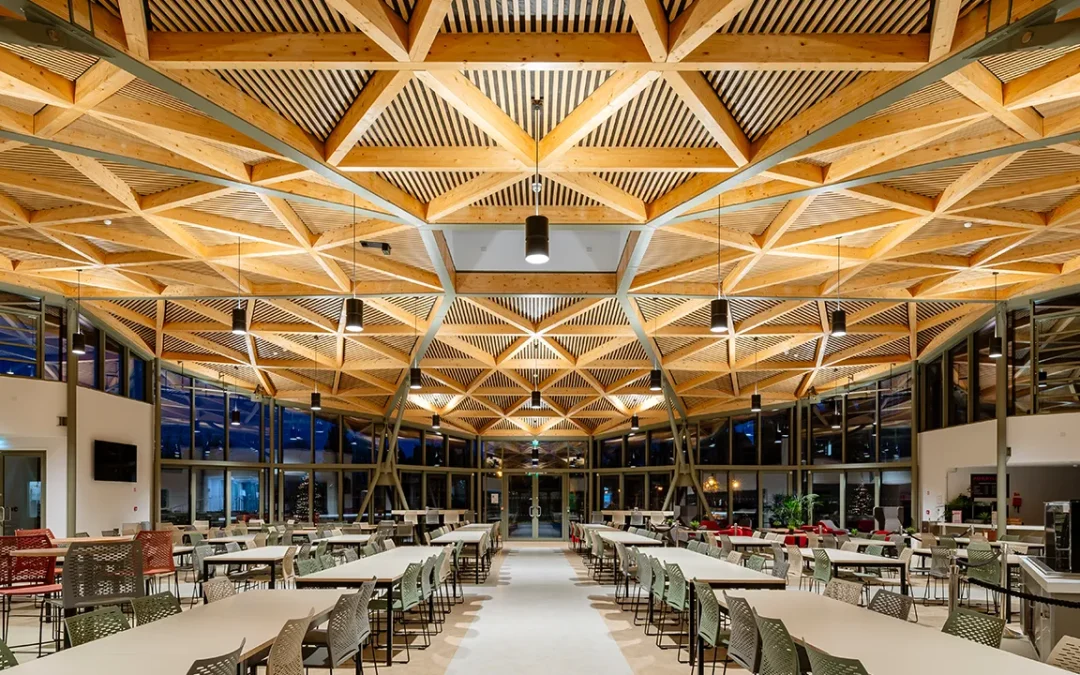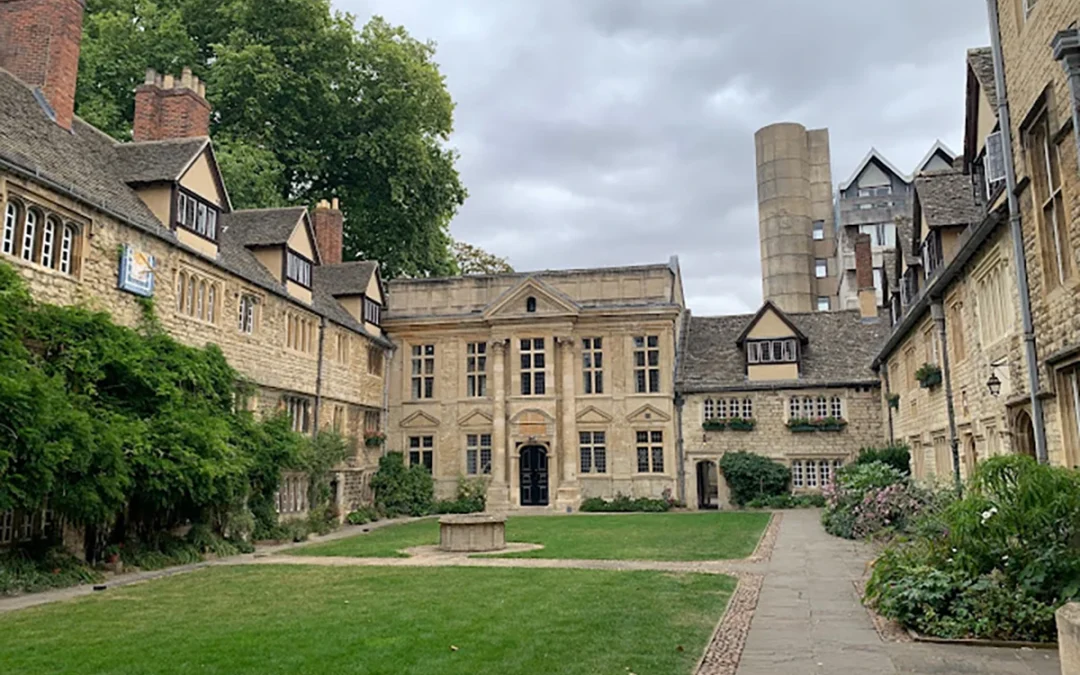Background / Objectives / Timeline
In 2015, the John Radcliffe Hospital in Oxford needed to refurbish their existing ground floor admin and library areas, create a new office space and undertake alterations to an existing seminar room and meeting rooms of the Weatherall Institute of Molecular Medicine (WIMM) Building. This included the installation of power, energy efficient lighting and emergency lighting, lighting controls, heat recovery and heating controls, disabled alarm, Wi-Fi and data installation, as well as fire alarm installation. Bojen saw this as an opportunity to further develop their vision of homogenous energy systems on complex sites.
- The project undertaking was complex and included the need to:
- Strip out parts of the existing electrical installations on the ground floor
- Relocate the existing main frame computer network / Comms room
- Install a new incoming supply and associated distribution panel
- Supply and install lighting, power, mechanical supplies and controls, fire alarms, emergency lighting installations, door access / disabled facilities and structured data cabling throughout.
This was to facilitate new office areas and distinct meeting rooms for admin, finance and other staff with modern facilities. Overall, it was important to create a much warmer and modern building for all staff and visitors that would last for many years with all the benefits of cost efficient heating, cooling and lighting.
Having successfully negotiated the tender process in July 2015, project work commenced in the August. Work continued throughout the remainder of the 2015/16 financial year, with completion in June 2016.
Advance(s) Sought
To develop a truly homogenous system to facilitate the work that would be undertaken in the building, whilst significantly reducing running costs and carbon emissions, thus making the building environmentally sustainable. Developing an understanding of the technological advances utilised in this process to enable it to be marketed to other clients wishing to reduce their energy bills and improve their working environment at the same time.
More specifically, the project is intended to improve the working environment by incorporating innovative new facilities to create a more efficient working system. Additionally, to create further space in the building for new research laboratories, primarily through reducing the space needed for heating, lighting and electrical installations and attempting to fit innovative new – smaller – systems into ceiling voids and other dead spaces wherever possible.To utilise value engineering to create a cost effective and ergonomically beneficial solution (i.e. within the specified budget) to suit the client’s requirements.
Technical Challenges
This design and build project brought problems with space in the ceiling voids for all the mechanical and electrical services required. Due to it being an existing building, the working space above the false ceilings was very limited, so developments of equipment and systems needed to include reductions in size wherever possible. This proved extremely difficult to resolve, particularly within the budget constraints.
The existing WIMM building external façade could not be taken out until the new extended section was completed. This created issues with the scheduling. There was an existing concrete down stand which needed to be removed to allow services to be installed and there were problems with noise during normal working hours.
A new Comms room was to be created and all of the existing mainframe and cabling needed to be redirected, along with the telephone exchange on generic wiring, Frodo unit, the UPS system and outgoing installation. The UPS system had to be redesigned so that the existing equipment could run in parallel with the new installation, thus allowing for disconnection and swap over on a weekend shut-down. This was a bespoke system and needed to be carefully considered for the future needs for the building. In addition, Comms and Security systems had to be designed to enable efficient cross-over without any operational problems. New, energy efficient intruder alarm, CCTV and door access equipment needed to be installed in the newly formed Comms room, which all had to be run from a single centralised unit.
Design of the heat recovery system required roof-mounted condensers for efficient operation, which presented a further challenge of ensuring a sufficient – and suitably insulated – power supply through limited cable routes.
Ultimately, combining the many disparate new components into a structured, homogenous system that would be energy efficient and environmentally sustainable was the main challenge. Space for installation was at a premium, but this could not be allowed to adversely affect overall system efficiency.
Resolution of Challenges, Project Outcomes and Future
As the Company had over ten years’ previous experience of working for this client, they knew the building layout, had experience of previous installations and had worked in other University buildings. The Company undertook detailed surveys to understand the myriad complexities involved in creating a homogenous system. Design of specific elements to fit into the limited space available was critical to the success of this project and Bojen spent a great deal of time and effort in attempting to solve this problem. Numerous trials were conducted with different ‘adapted’ components, with many failing and having to be discarded. After significant trial and error a suitably efficient system was developed that could be installed.
It was important to identify the best solutions both practically, financially and from an energy consumption viewpoint. There were also meetings and discussions with LED manufacturers to establish what alterations / improvements could be made by the Company without losing warranty validity for the feature lighting.
Much of the work required on-site bespoke design that allowed for flexibility in connection, due to the space constraints and the extreme complexities of the installation as a whole.
